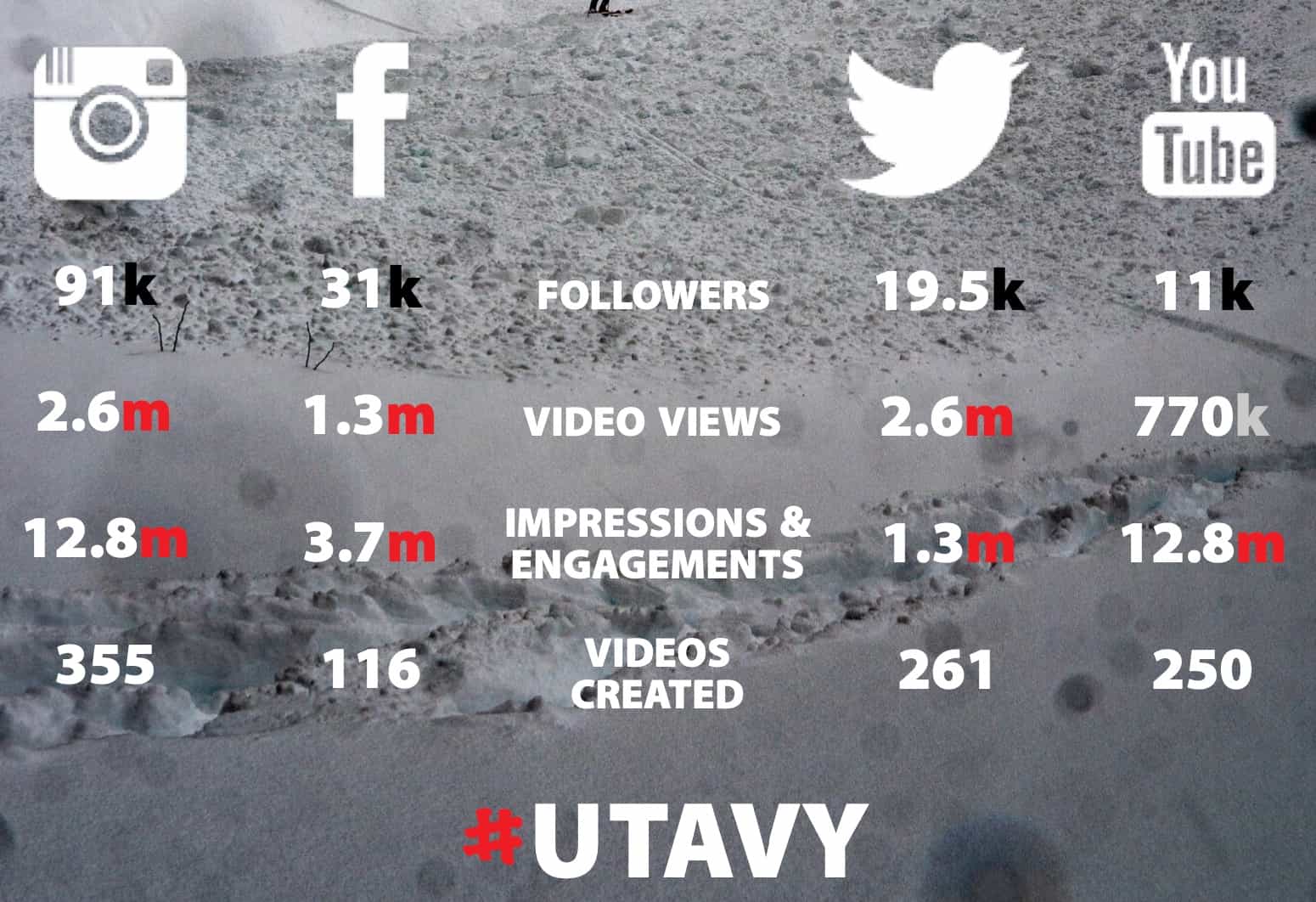
The Utah Avalanche Center, responsible for the eight Utah forecast regions, has wrapped up its season and published its Annual Report, including metrics around forecasting, education, and awareness programs. Here are some of the main points:
Statistics:
- Snow/avalanche
- 219 % average snowpack
- 395 human-triggered avalanches
- 92 people caught
- 14 people buried
- 3 people killed
- Budget
- $1,600,000 total budget
- 20% from federal, state, and county governments
- 70% from private sponsorship
- 95% spent on forecasting and education
- $1,600,000 total budget
- Staff
- 19 employees
- 621 total field days
- 1,202 total avalanche forecasts posted
- utahavalanchecenter.org site
- 4.4 million page views
- 475 videos uploaded
- 4.8 million video views
- 2,454 fields reports from forecasters, pro-observers, and the public
- Reports viewed almost 2 million times
- Danger Ratings issued
- Low – 928
- Moderate – 2,151
- Considerable – 179
- High – 480
- Extreme – 6
The numbers highlight a season of records; record snowfall, a record number of avalanches, and a record number of powder days.
The report says another unique aspect of this winter was the deep snow at low elevations. In most winters, low-elevation snow comes and goes as the sun and warm temperatures melt it away. Since it rarely stopped snowing for very long, the snowpack kept growing at low elevations. This caused two issues.
The first was that avalanches happened in many places where we weren’t accustomed to seeing them, impacting many more people who don’t normally travel in avalanche terrain. The second issue was that avalanches starting at higher elevations could run farther because so much vegetation and terrain roughness was covered.
In 2021/22, Utah saw zero avalanche fatalities. Sadly that was not the case this season, with three tragic avalanche fatalities, each with a unique set of circumstances.
The first fatality was on March 9th, 2023, in Weber Canyon. The second was on March 27th in Pole Canyon. The third fatality of the year was a roof avalanche on March 27th. This is only the second recorded roof avalanche fatality in Utah. With the copious amount of snow this winter, many mountain homes had heavy snow accumulation on their roofs that became unstable when temperatures warmed.
The UAC also continued to expand and improve its education and awareness programs. It ran 40 avalanche courses with 465 attendees, 52 awareness events with 5,800 attendees, and 98 Know Before You Go presentations to 7,300 attendees and 30,000 online views.
Check out the full report PDF for more insights and data from the UAC.
